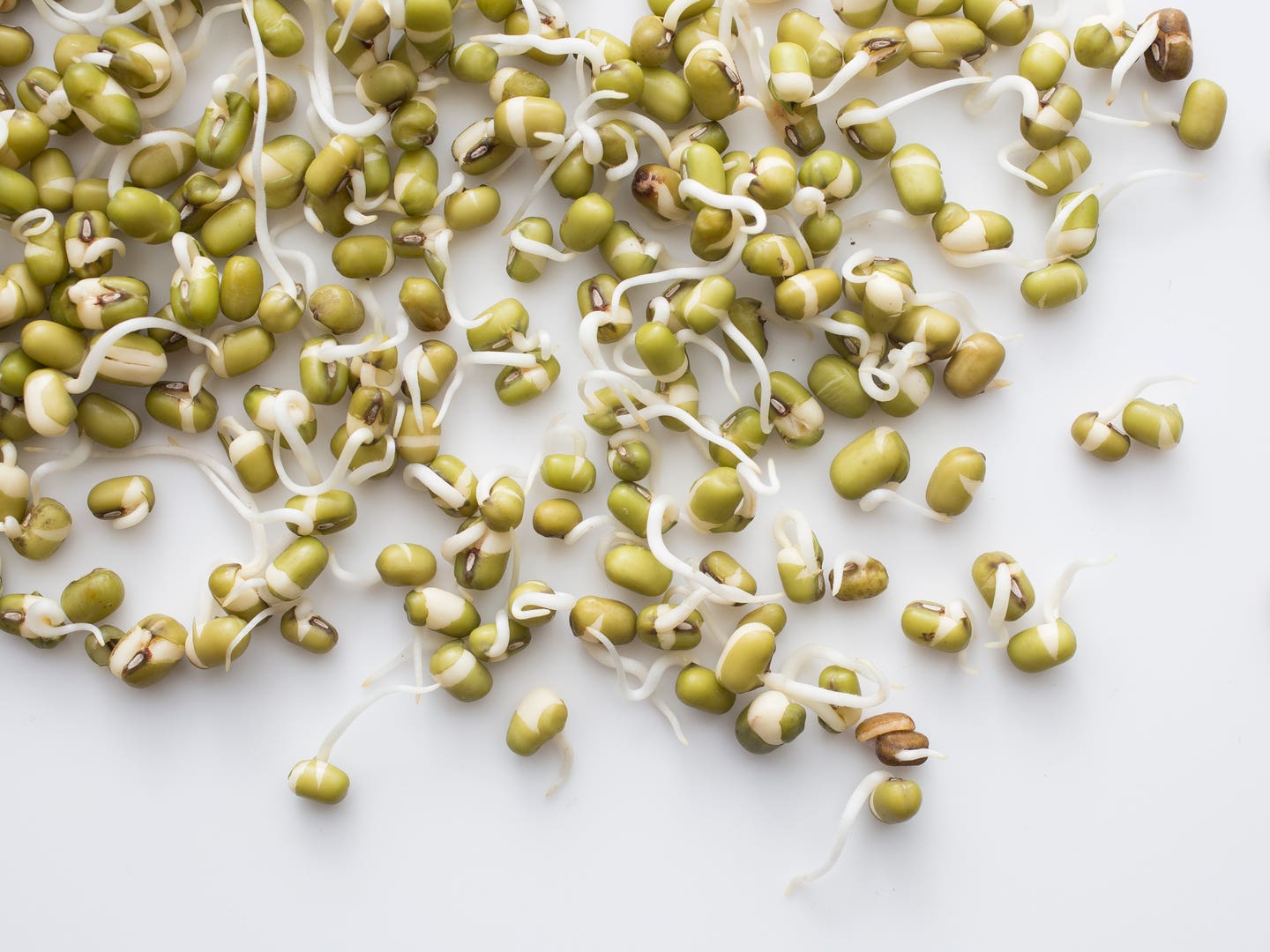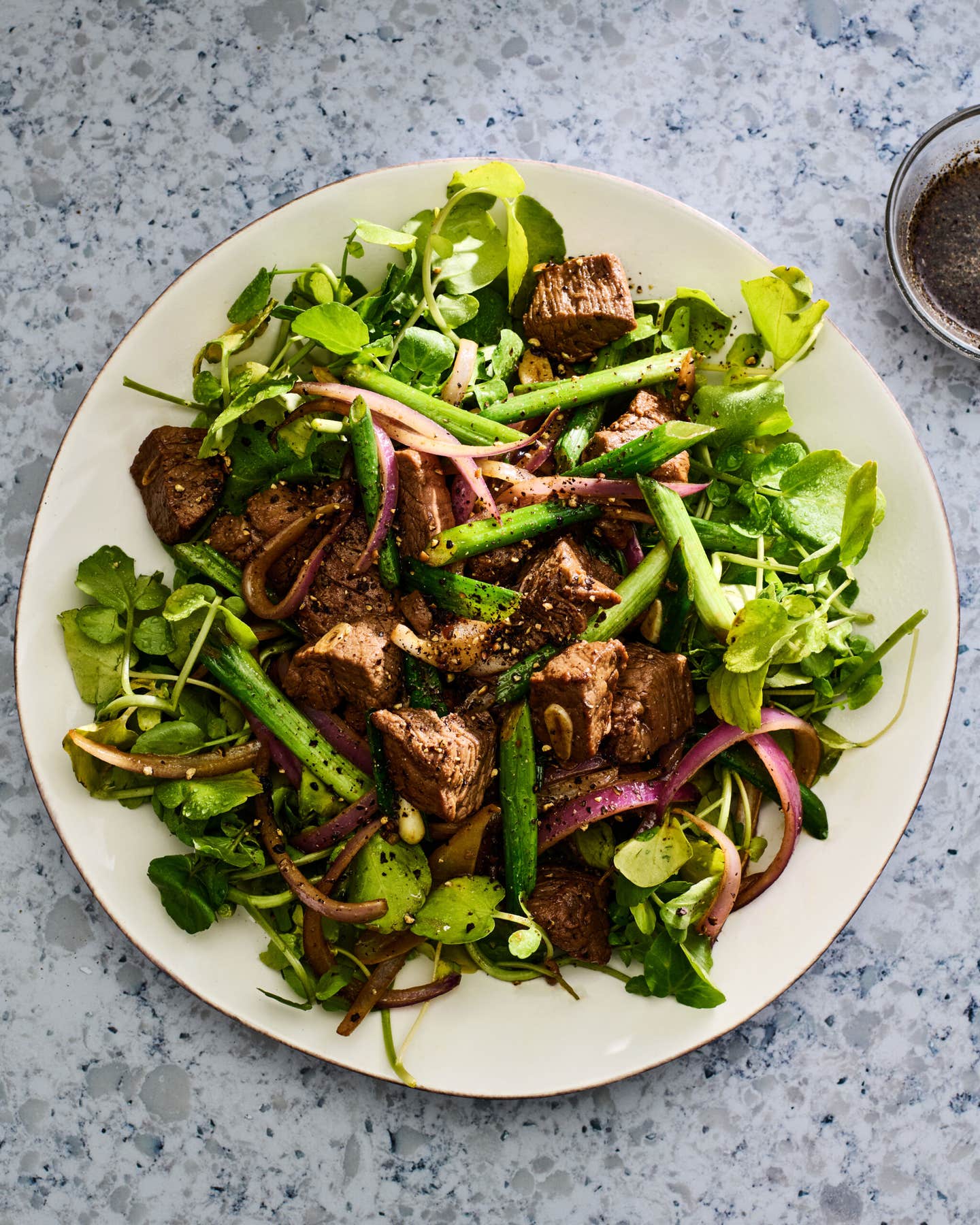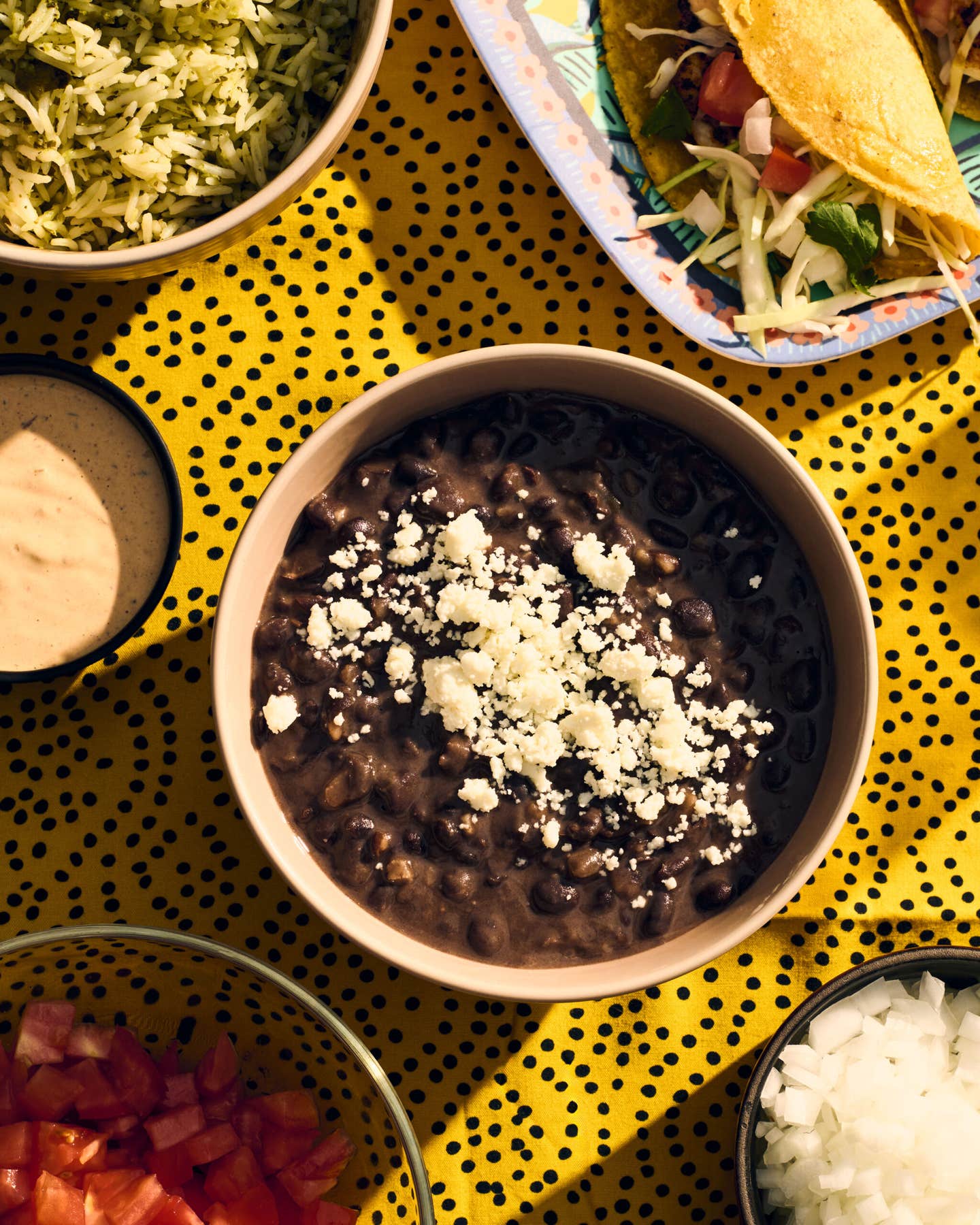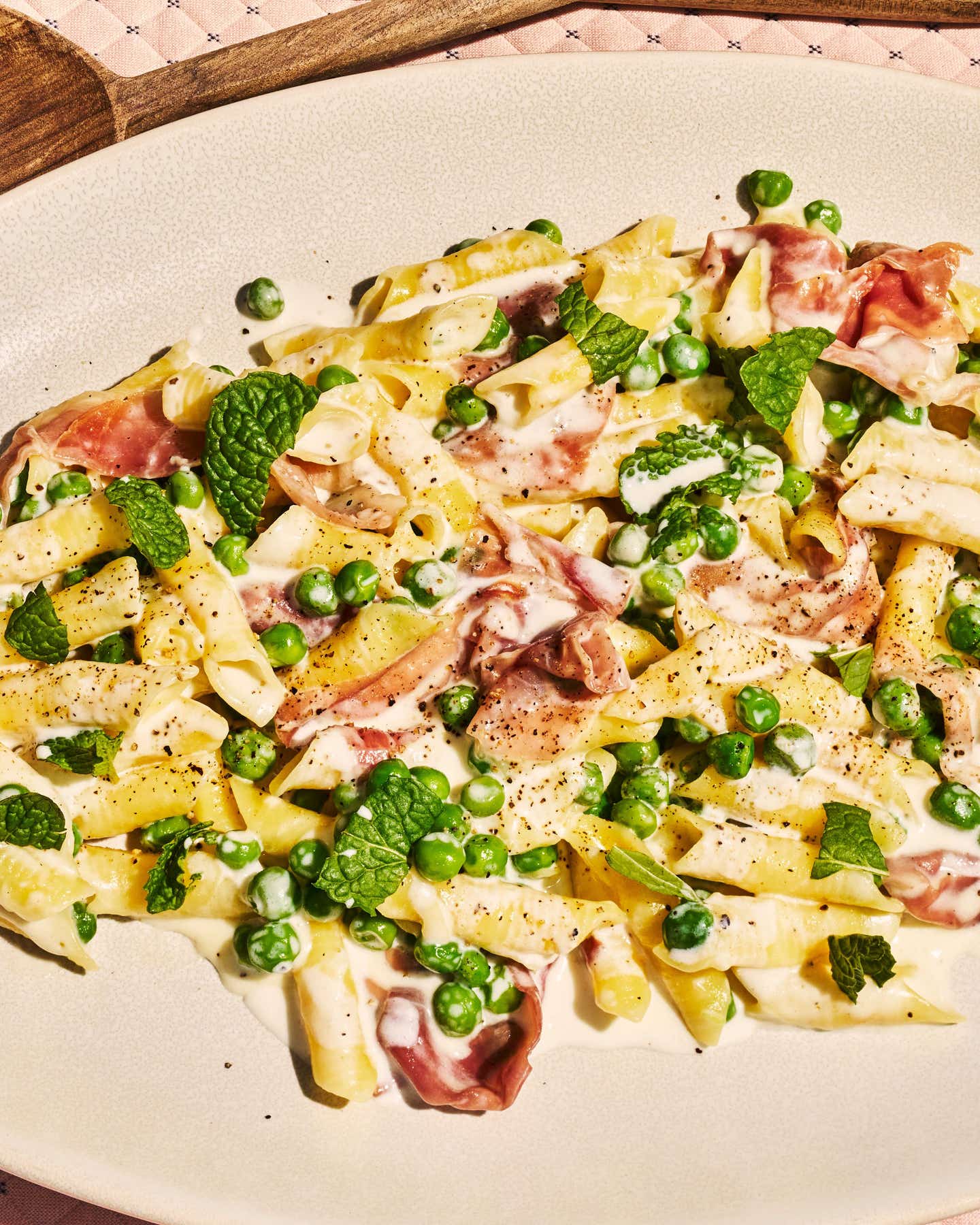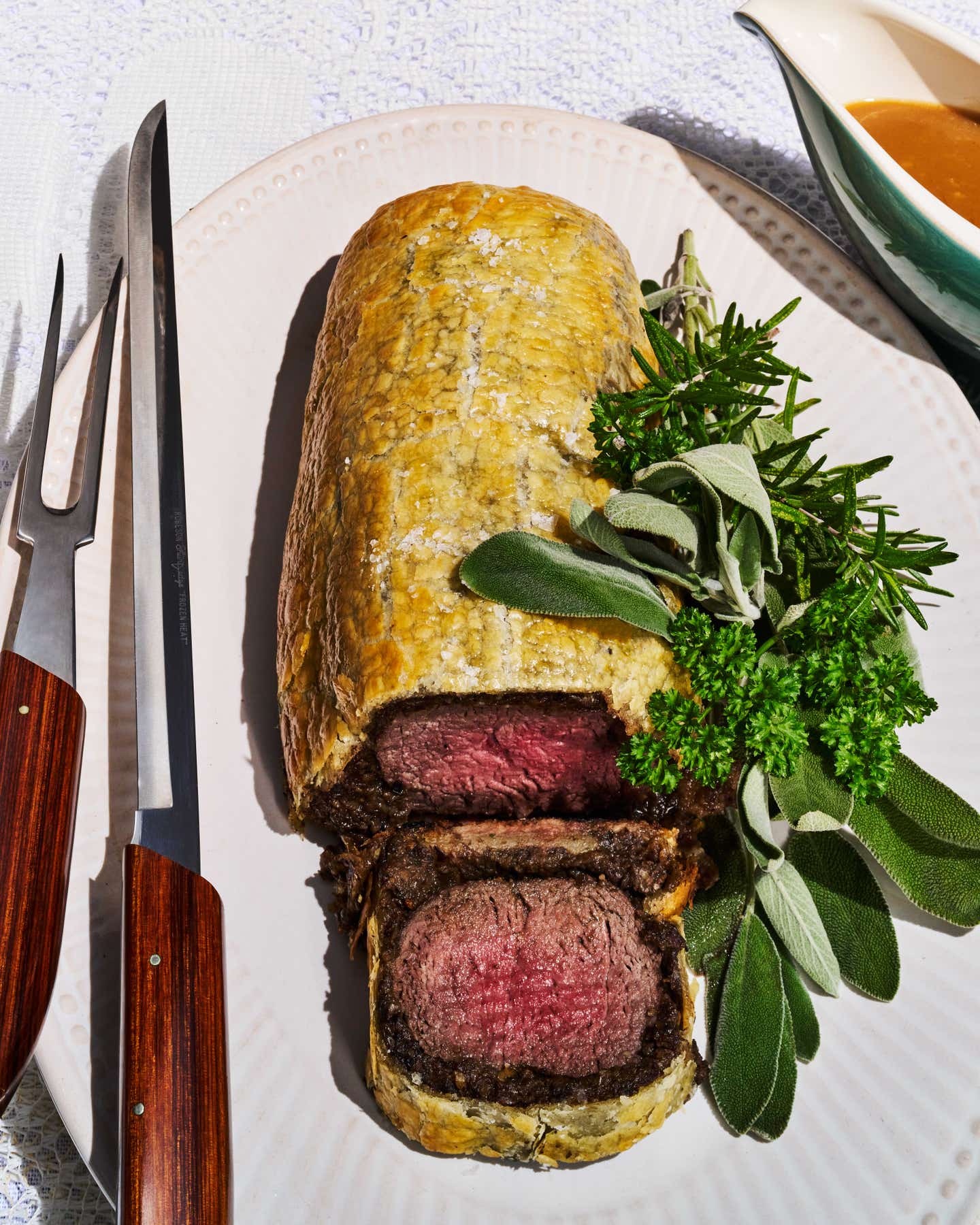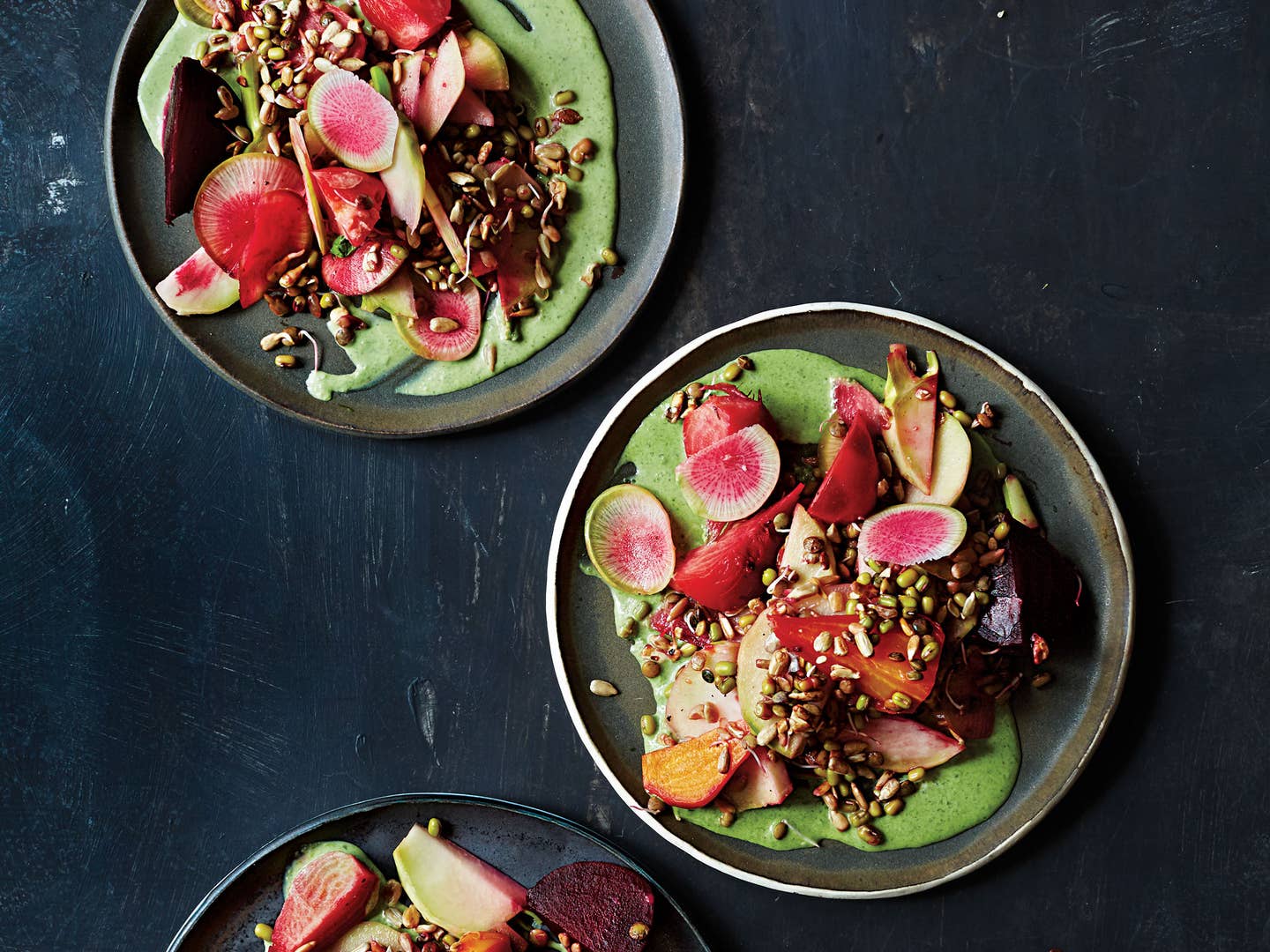
Give Beans a Fresher Flavor by Sprouting Them
Bring dried legumes back to life with water, some cheesecloth, and a little patience
Every lentil, every chickpea, even every sunflower seed, has a secret green salad hidden deep within it. Dried up and left for soaking, souping, or sprinkling, legumes and seeds can come back to life. With just a few days of moisture and warmth, they transform into sometimes-crunchy, sometimes-delicate, nutrient-packed sprouts.
"Homegrown sprouts add a welcome brightness to everything," says Jessica Koslow, chef-owner of Los Angeles' Sqirl restaurant. Koslow has had lines out the door for her rice bowls and fresh salads ever since she opened the "bacon-serving but vegan-friendly" spot in 2012. "I always have buckets of soaking legumes around the restaurant, and I love waiting for the little sprout stems to poke out."
A sprout is simply a germinated seed, a little newborn plant at most a few inches long, a burst of green life from a tiny, nutrient-dense shell. Making your own is one of the most convenient and versatile ways to bring fresh greens into your life, particularly when seasonal pickings are slim. Koslow tosses sprouted sunflower seeds with citrus and spicy-sweet shrimp for a vibrant meal during the last gasps of cold; she grinds chickpea sprouts and folds them into a batter for a crisp socca pancake; and she adds a whole medley of sprouted grains to roasted root vegetables for a fresh salad packed with interesting textures.
“It's in this in-between season that I appreciate them most,” Koslow says, “when spring produce hasn't yet hit the market, but there's still something fresh in the kitchen.”
See the recipe for Sprouted Chickpea Socca with Herb Salad and Yogurt »
See the recipe for Sprouted Seed and Grain Salad with Spiced Prawns »
See the recipe for Sprouts, Kohlrabi, and Beet Salad with Herbed Crème Fraïche Dressing »
Keep Reading
Continue to Next Story
